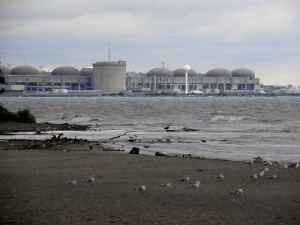Clean Energy Canada | Pickering refurbishment rightly focuses on non-emitting power, but the competitiveness of renewables must not be overlooked
January 30, 2024

TORONTO — Rachel Doran, vice president of policy and strategy at Clean Energy Canada, made the following statement in response to the announced refurbishment of the Pickering nuclear plant:
“Building clean electricity capacity is an economic strategy and climate action rolled into one. Decisions made today will have implications for both for years to come.
“As such, it’s good to see the province prioritizing non-emitting sources, like nuclear, over polluting natural gas power. It is important to remember, however, that while nuclear will be part of the energy mix for a net-zero future, it’s not a silver bullet. Electricity demand in the province is set to potentially quadruple by 2050. This demand must be met cleanly and cost-effectively, for bill payers and industries alike.
“Other non-emitting sources of power, like wind and solar, can produce power more cheaply in Ontario than natural gas, and costs are expected to decline by as much as 40% by 2035, according to a Clean Energy Canada study. Even with the addition of grid-scale battery storage for when the sun isn’t shining and the wind isn’t blowing, renewables are set to be highly cost-competitive.
“Looking forward, distributed energy solutions, like grid-connected EVs, also offer options to cut power bills and meet demand. RBC estimates that distributed energy resources integrated into smart homes could save Ontario ratepayers $500 million annually.
“The provincial government has taken a prudent step in commissioning a pathway assessment for building out a net-zero grid by 2050. This study puts Ontario in a leadership role nationally. To that end, we encourage the province to make this forthcoming assessment public in order to help drive transparent conversations around Ontario’s energy choices. The province should also publish its analysis on the ability of and costs associated with using renewables and energy storage to meet the same energy needs as would the refurbishment of the Pickering Nuclear facility.
“With electricity set to power more and more of our homes, cars, and industries, the stakes have never been higher.”
KEY FACTS
- A recent Clean Energy Canada report, A Renewables Powerhouse, found that electricity from wind and solar is already cost-competitive with natural gas generation in Ontario and Alberta (the two provinces studied), with even more cost reductions on the horizon.
- When Canada’s carbon price is also included, both wind and solar are significantly cheaper than natural gas already today.
- Four nuclear generating stations in Canada provide about 15% of the country’s total electricity generation. Over 50% of electricity in Ontario is currently nuclear.
- Total life-cycle emissions from solar, wind, and nuclear are considerably lower and less variable than those from natural gas and coal. Specifically, the median total life-cycle emissions from natural gas power is almost 40 times that of wind and more than 10 times that of solar. Previous review studies found similar results.
- Renewables are set to contribute 80% of new power capacity worldwide between now and 2030 under current policies, with solar alone accounting for more than half.
- A 2021 study analyzed the ability of solar and wind to meet electricity demand in over 40 countries and ranked Canada second.
RESOURCES
Report | A Renewables Powerhouse
Media Brief | Addressing common myths around renewable power
Report | A Clean BillSubmission | The Electrification and Energy Transition Panel – Written Submission